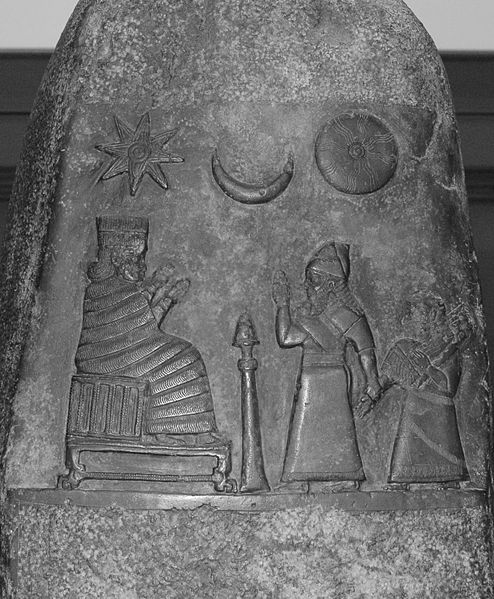Kashmiri Pandit
SENIOR MEMBER

- Joined
- Oct 12, 2015
- Messages
- 3,023
- Reaction score
- -2
- Country
- Location

22 NOVEMBER, 2015 - 14:52 DHWTY
Could There be a Third Bamiyan Buddha, Hidden for Centuries?
One of the most tragic examples of religious iconoclasm in recent history is the destruction of the two giant standing statues of Buddha by the Taliban in March 2001. These were the famed Buddhas of Bamiyan, which were carved into the side of a cliff in the Bamiyan Valley, in the Hazarajat province of central Afghanistan.
Exchanging Ideas and Trading Along the Silk Road
These statues were believed to have been made sometime between the 6th century AD, to the middle of the 7th century at latest, as the inhabitants of this region practiced Buddhism at that time. This was perhaps due to the location of Bamiyan on the ancient Silk Road, which not only facilitated the exchange of trade goods, but also of ideas. Thus, Buddhism was able to spread outwards from India along the Silk Road. Conversely, Buddhist pilgrims travelled along the Silk Road to reach the sacred sites of Buddhism in India. Some of these pilgrims even left records for posterity, and it is through one of these pilgrims that we hear of the story of the ‘third Bamiyan Buddha’.

Tajiks in Bamiyan (1843). (Public Domain) Bamiyan was one of the cities located on the Silk Road and its citizens took part in the exchange of goods and ideas.
The Buddhas in The Great Tang Records on the Western Regions
Xuanzang was a Buddhist monk from China who travelled from China to Central Asia, and thence to South Asia, before returning home. This entire journey, which lasted 19 years, was then compiled (in 646 AD) into a book known in English as the Great Tang Records on the Western Regions.

Xuanzang on his journey to India. (Public Domain)
Bamiyan and its Buddhas are mentioned in Xuanzang’s book. Thus, for instance, one reads that:
“To the north-east of the royal city there is a mountain, on the declivity of which is placed a stone figure of Buddha, erect, in height 140 or 150 feet [42.7 or 45.7 meters]. Its golden hues sparkle on every side, and its precious ornaments dazzle the eyes by their brightness.”
Curiously, Xuanzang continues by describing a second standing Buddha which is made of metal, rather than stone:
“To the east of this spot there is a convent, which was built by a former king of the country. To the east of the convent there is a standing figure of Sakya Buddha, made of metallic stone (teou-shih), in height 100 feet [30.5 meters]. It has been cast in different parts and joined together, and thus placed in a completed form as it stands.”

An 1885 illustration of the two standing Bamiyan Buddha statues. (Public Domain)
Finally, Xuanzang mentions a third Buddha, though unlike the other two, this statue is in a reclining position:
“To the east of the city 12 or 13 li there is a convent, in which there is a figure of Buddha lying in a sleeping position, as when he attained Nirvana. The figure is in length about 1000 feet [304.8 meters] or so.”
The Nirvana Buddha Statue
Several years after the destruction of the two standing Buddhas of Bamiyan, it was reported that a third Buddha (or rather, fragments of a statue of the Buddha) was discovered less than 2 km (1.2 mi) from the site where these statues once stood. This reclining statue, known also as the ‘Nirvana Buddha’ (since this pose depicts the Buddha as he was about to achieve the transcendent state of Nirvana), is said to have been found within the foundations of an ancient Buddhist temple.
Unlike Xuanzang’s reclining Buddha, however, this Buddha is reported to only be 19 meters in length (about 62 feet), a dwarf compared to the statue that the Chinese monk came across when he was at Bamiyan.

An example of a reclining Buddha, also called a “Nirvana Buddha,” statue from the 12th century in Gal Vihara, Polonnaruwa, Sri Lanka. (CC BY SA 3.0)
Could the 3rd Bamiyan Buddha Still Exist?
The archaeologist who made this discovery, Zemaryali Tarzi, is confident that Xuanzang’s reclining Buddha is still somewhere out there in Bamiyan, and hopes that he will be able to find it one day. Other scholars, however, are not as convinced, and have speculated that the Chinese monk may have mistaken a natural rock formation for a sculpture of the Buddha, or was confused about the statue’s location. Others have speculated that even if the statue had once existed, it may have already crumbled into dust centuries ago.
Featured image: Sunrise shows the loss of the larger Bamiyan Buddha statue in the Bamiyan Valley, Afghanistan. Photo source: (CC BY 2.0)
By: Ḏḥwty
References
AFP, 2008. New Bamiyan Buddha find amid destruction. [Online]
Available at:http://web.archive.org/web/20110820235540/http://afp.google.com/article/ALeqM5iMwnIv89hH3Q7rvdzmDQH9zCL6KA
Hammer, J., 2010. Searching for Buddha in Afghanistan. [Online]
Available at: http://www.smithsonianmag.com/people-places/searching-for-buddha-in-afghanistan-70733578/?no-ist
Synovitz, R., 2008. Archaeologists Find Giant 'Sleeping' Buddha In Afghanistan. [Online]
Available at:http://www.rferl.org/content/Archeologists_Find_Giant_Sleeping_Buddha_In_Afghanistan_/1197572.html
UNESCO, 2015. Cultural Landscape and Archaeological Remains of the Bamiyan Valley. [Online]
Available at: http://whc.unesco.org/en/list/208
www.laputanlogic.com, 2007. Xuan Zang and the Third Buddha. [Online]
Available at: http://www.laputanlogic.com/articles/2003/09/21-106424100165818095.html
Xuanzang, Great Tang Records on the Western Regions: Book 1 [Online]
[Beal, S. (trans.), 1884. Xuanzang’s Great Tang Records on the Western Regions: Book 1.]
Available at: Xuanzang's Record of the Western Regions
Last edited:



















